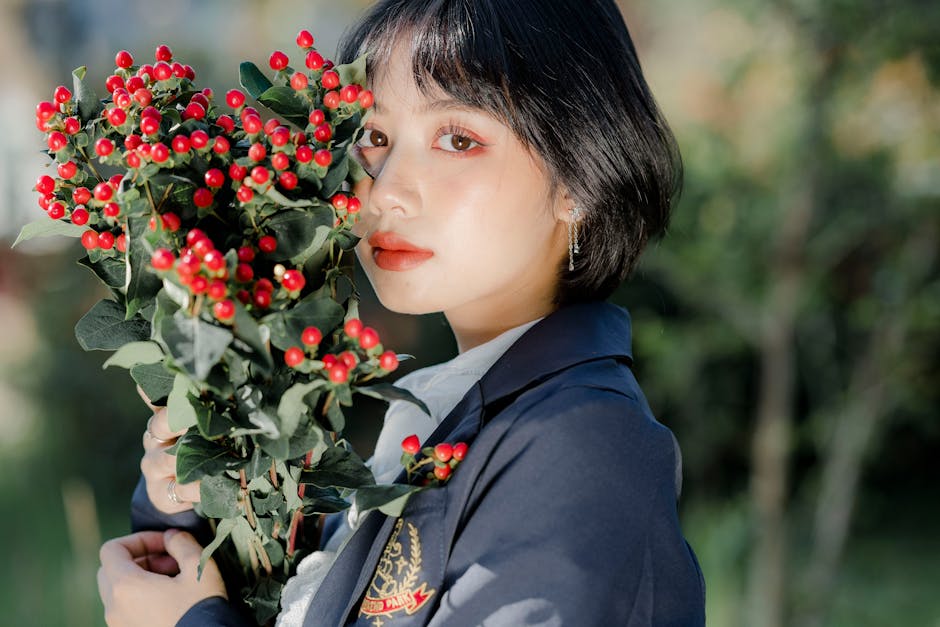Shikoku Pilgrimage: A Journey Through Nature, Spirituality, and Island Wonders

Shikoku Pilgrimage: A Journey Through Nature, Spirituality, and Island Wonders
Hey there! Ever feel that pull to escape the everyday, to reconnect with yourself and the natural world? I did, and that's what led me to the Shikoku Pilgrimage in Japan. It's more than just a walk; it's a soulful journey that weaves together ancient temples, breathtaking landscapes, and the captivating spirit of the island. Let me share my experiences with you, and hopefully inspire you to consider this incredible adventure.
What is the Shikoku Pilgrimage?

The Shikoku Pilgrimage, or Shikoku Henro (四国遍路), is a multi-temple pilgrimage circuit around the island of Shikoku, Japan. It's traditionally associated with Kobo Daishi (also known as Kukai), the founder of Shingon Buddhism. Legend has it that Kobo Daishi was born on Shikoku and traveled extensively around the island, establishing many of the temples along the route.
Pilgrims, known as Ohenro-san (お遍路さん), traditionally wear white clothing (hakue), a sedge hat (sugegasa), and carry a staff (kongozue), all symbolic of their journey. The staff is considered the embodiment of Kobo Daishi himself, and pilgrims treat it with respect, often washing it along with their own feet.
The full circuit encompasses 88 official temples and numerous smaller temples (bangai). The entire route is approximately 1,200 kilometers (745 miles) long. Walking the entire pilgrimage takes most people between 45 and 60 days. Of course, you don't have to do the whole thing at once! Many people break it up into shorter sections, completing it over several years.
Why Choose the Shikoku Pilgrimage? My Personal Reflection

Honestly, I was drawn to the Shikoku Pilgrimage because I was feeling lost and needed a change. The idea of a long walk, surrounded by nature, with a spiritual element, deeply appealed to me. I wasn't particularly religious, but I was seeking something more profound than just a vacation.
What I found was so much more than I expected. The physical challenge was definitely there, but it was the mental and emotional journey that truly resonated with me. The simplicity of the daily routine - waking up, walking, praying at temples, finding a place to sleep - stripped away the complexities of modern life and allowed me to focus on the present moment.
Plus, the kindness and generosity of the local people, the Osettai (お接待), was incredibly heartwarming. I was constantly offered food, drinks, and words of encouragement along the way. It truly restored my faith in humanity.
Planning Your Shikoku Pilgrimage Adventure

Okay, so you're intrigued! Here's a breakdown of what you need to consider when planning your Shikoku Pilgrimage:
1. Deciding on Your Approach:
There are several ways to tackle the Shikoku Pilgrimage:
- Walking: This is the traditional way and allows for a deeply immersive experience. You'll need to be prepared for long days of walking, varying terrain, and all kinds of weather.
- Bus Tour: Several bus tour companies offer guided pilgrimages, visiting the temples in a comfortable, air-conditioned bus. This is a good option for those with limited time or mobility issues.
- Car: Renting a car allows you to cover more ground quickly and visit temples at your own pace. However, it's less immersive than walking.
- Combination: Many people choose to combine different methods. For example, you might walk some sections and use buses or trains for others.
2. Best Time to Go:
The best times to walk the Shikoku Pilgrimage are:
- Spring (March-May): The weather is generally mild and pleasant, with blooming cherry blossoms and azaleas adding to the beauty. However, Golden Week (late April/early May) is a very busy time.
- Autumn (September-November): The autumn foliage is stunning, and the temperatures are comfortable for walking.
Summer (June-August) can be very hot and humid, and winter (December-February) can be cold and snowy, especially in the mountainous areas.
3. Accommodation:
There are various accommodation options available along the pilgrimage route:
- Temple Lodgings (Shukubo): Staying at a temple lodging is a unique and authentic experience. You can participate in morning prayers and enjoy traditional Japanese meals. Reservations are usually required.
- Minshuku (Japanese Inns): Minshuku are family-run inns that offer a more personal and intimate experience than hotels.
- Business Hotels: These are typically small, functional hotels that are readily available in towns and cities along the route.
- Camping: Camping is possible in some areas, but it's important to check with local authorities and be aware of potential wildlife.
- Zenko Yado: These are free accommodations for pilgrims, often a small room in a temple or private home. They are usually very basic and require you to bring your own bedding and food.
4. Essential Gear:
If you're planning to walk, here's a basic packing list:
- Comfortable walking shoes: Break them in before you go!
- Hiking socks: Moisture-wicking socks are essential to prevent blisters.
- Backpack: Choose a comfortable backpack with good support.
- Rain gear: Be prepared for rain, even in the "dry" seasons.
- Sunscreen and hat: Protect yourself from the sun.
- Water bottle or hydration pack: Stay hydrated!
- First-aid kit: Include blister treatment, pain relievers, and any personal medications.
- Headlamp or flashlight: For walking in the dark.
- Japanese phrasebook: Knowing basic Japanese phrases will be incredibly helpful.
- Pilgrim's clothing (optional): Hakue (white coat), sugegasa (sedge hat), kongozue (walking stick). You can buy these at temple shops along the way.
5. Understanding Temple Etiquette:
Respectful behavior at the temples is crucial. Here are some guidelines:
- Wash your hands and mouth at the purification fountain (temizuya) before entering the temple grounds.
- Offer a small donation (usually a few coins) at the main hall (hondo) and the Daishi hall (daishido).
- Light incense sticks and candles.
- Recite the Heart Sutra (Hannya Shingyo) or other Buddhist prayers. You can find translations in English.
- Stamp your nōkyō-chō (pilgrimage stamp book) at the nōkyōsho (stamp office).
The Natural Beauty of Shikoku

Beyond the spiritual significance, the Shikoku Pilgrimage is a feast for the senses. The island boasts diverse landscapes, from dramatic coastlines and rugged mountains to lush forests and tranquil valleys.
Coastal Wonders: The coastal sections of the pilgrimage offer stunning views of the Pacific Ocean. You'll walk along sandy beaches, rocky cliffs, and through charming fishing villages. The sound of the waves and the fresh sea air are incredibly invigorating.
Mountain Escapes: The mountainous interior of Shikoku is a hiker's paradise. You'll climb through forests of cedar and cypress, cross crystal-clear streams, and be rewarded with panoramic views from the summits. Mount Ishizuchi, the highest peak on Shikoku, is a particularly challenging but rewarding climb.
Lush Valleys and Waterfalls: Shikoku is blessed with abundant rainfall, which creates a lush and verdant landscape. You'll encounter cascading waterfalls, tranquil valleys, and rice paddies that stretch as far as the eye can see. The Iya Valley, known for its remoteness and traditional vine bridges, is a must-see.
Island Hopping Around Shikoku

While the main focus is the Shikoku mainland, don't miss the opportunity to explore some of the surrounding islands! They offer a unique perspective on the region's culture and natural beauty.
Naoshima: This art island is a haven for contemporary art lovers. You'll find world-class museums, outdoor sculptures, and unique architectural designs that blend seamlessly with the natural environment.
Teshima: Another art island, Teshima is known for its peaceful atmosphere and stunning natural landscapes. The Teshima Art Museum, with its minimalist architecture and immersive art installations, is a highlight.
Shodoshima: This island is famous for its olive groves and soy sauce production. You can wander through olive gardens, visit soy sauce factories, and enjoy stunning coastal views.
Connecting with the Local Culture: Osettai and More

One of the most memorable aspects of the Shikoku Pilgrimage is the kindness and generosity of the local people. Osettai (お接待) refers to the gifts of food, drinks, or other assistance offered to pilgrims along the way. These acts of kindness are a deeply ingrained part of the pilgrimage culture.
I was constantly amazed by the generosity of strangers. I was offered everything from oranges and tea to full meals and even a place to stay for the night. These encounters were not just about material gifts; they were about human connection and shared understanding.
Beyond Osettai, take the time to interact with the local people. Learn a few basic Japanese phrases, ask questions, and show genuine interest in their lives. You'll be surprised by the warmth and hospitality you encounter.
The Lasting Impact: What I Learned on the Pilgrimage

The Shikoku Pilgrimage was a transformative experience for me. It wasn't just a walk; it was a journey of self-discovery, resilience, and connection.
Here are some of the key lessons I learned:
- The importance of simplicity: Stripping away the complexities of modern life allowed me to focus on what truly mattered.
- The power of human connection: The kindness and generosity of the local people restored my faith in humanity.
- The beauty of nature: The stunning landscapes of Shikoku reminded me of the importance of protecting our planet.
- The strength within myself: Completing the pilgrimage gave me a sense of accomplishment and resilience that I didn't know I possessed.
Even if you can't commit to the entire 1,200-kilometer walk, even a small section of the Shikoku Pilgrimage can be a rewarding and enriching experience. It's a chance to disconnect from the digital world, reconnect with nature, and discover the inner strength and resilience that we all possess. So, are you ready to embark on your own journey?
Post a Comment